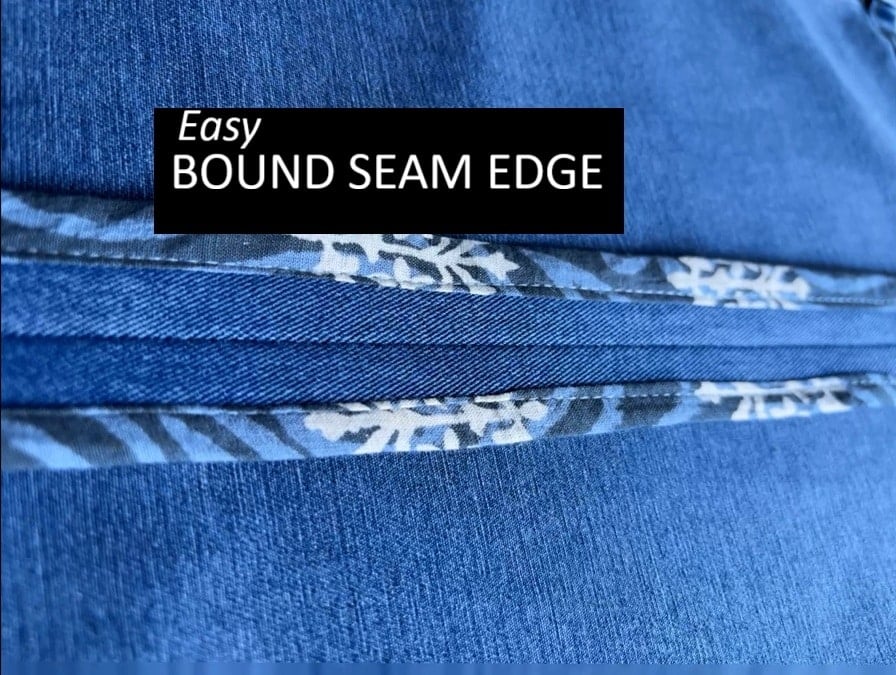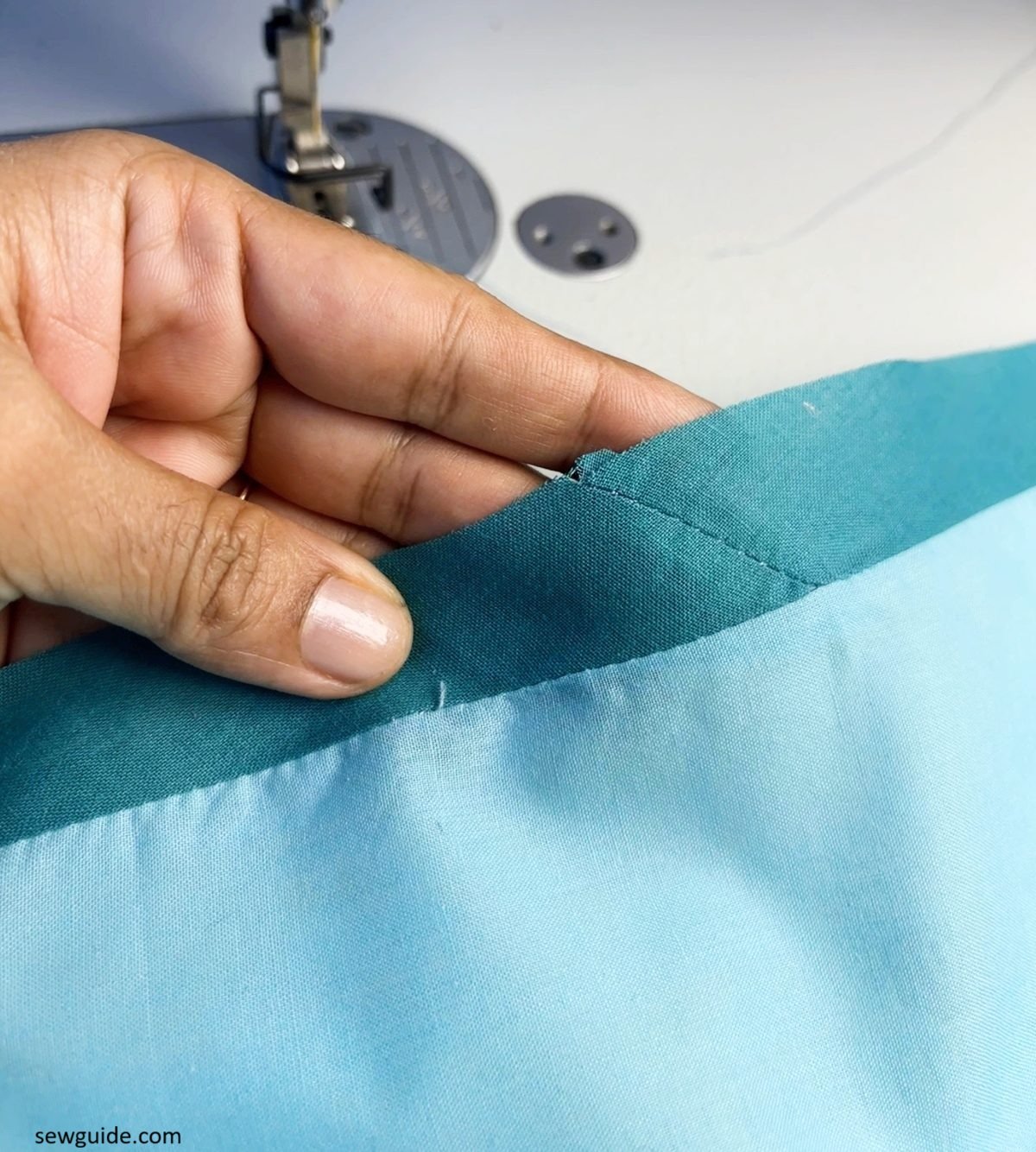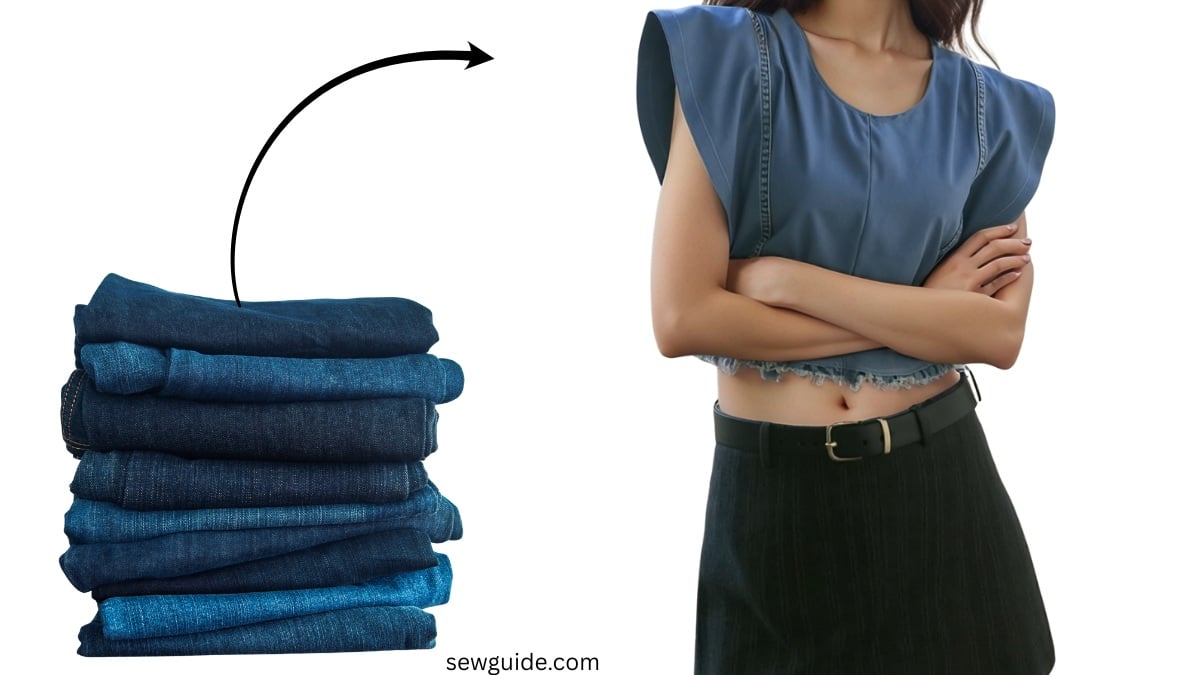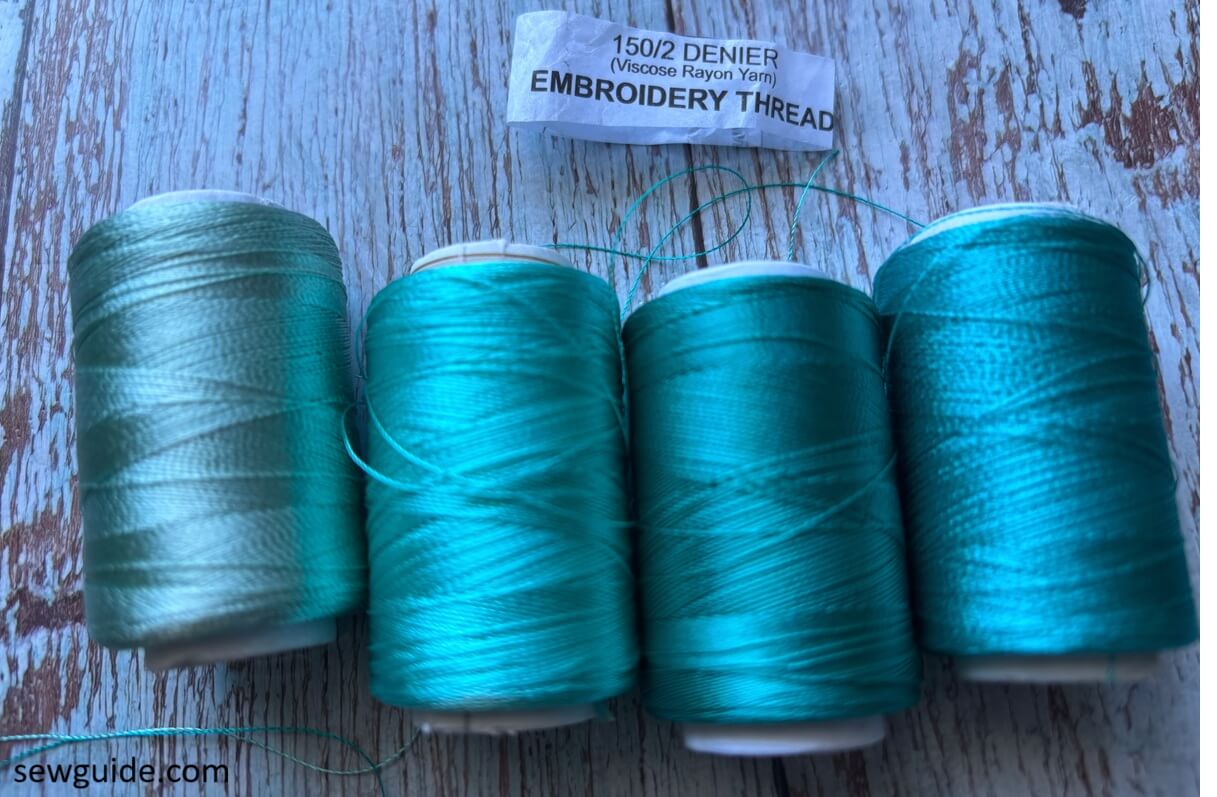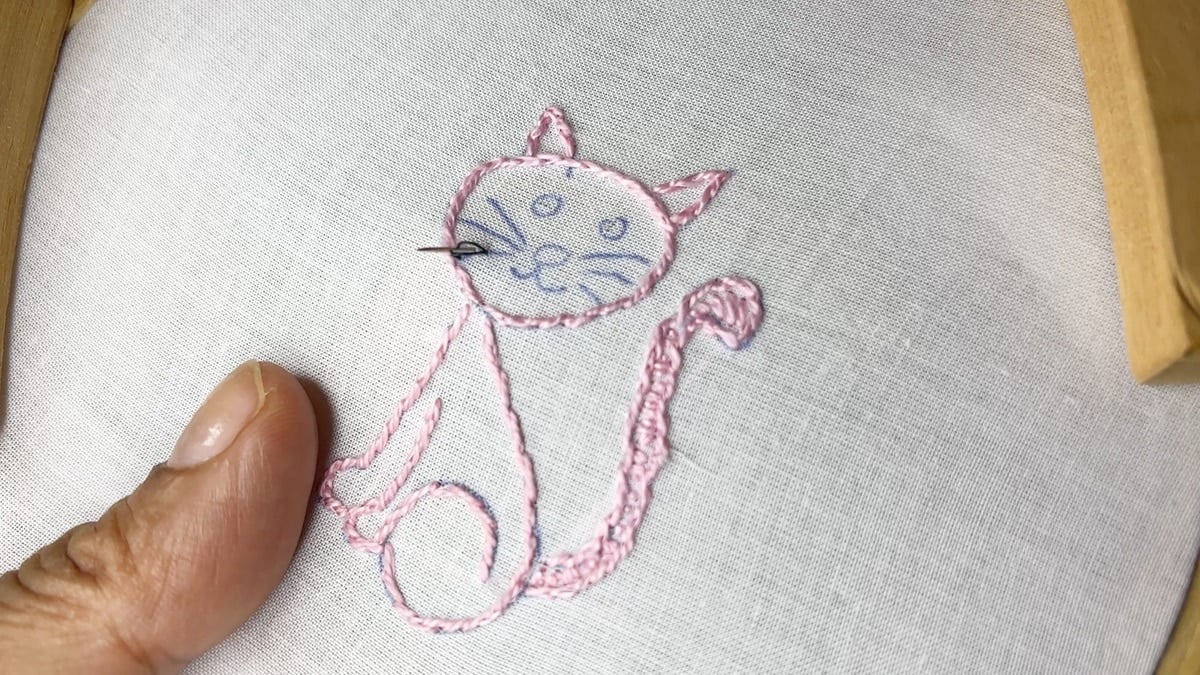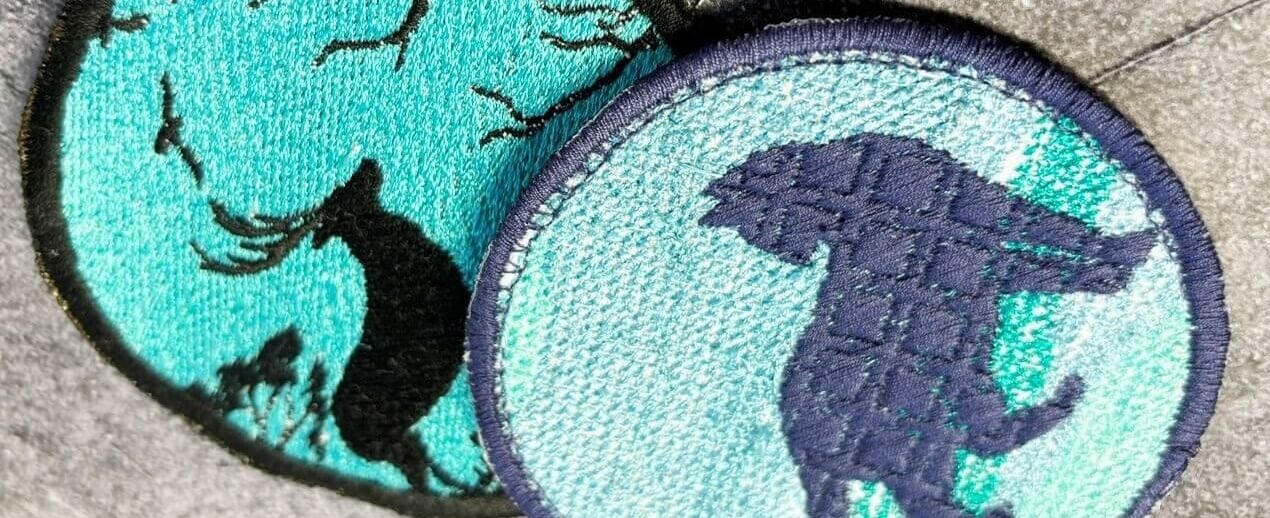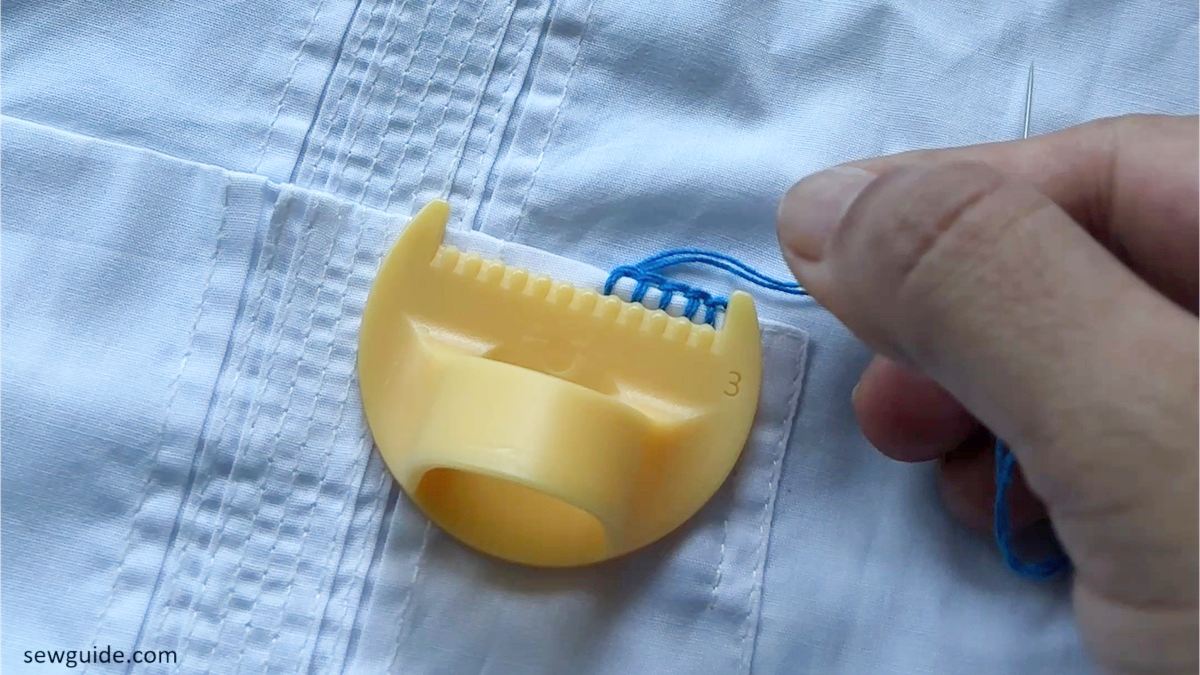Let me tell you a secret – I use sewing machine thread on my embroidery machine a lot of the time. The embroidery purists would disown me – And there is a reason. Sewing thread may not always hold up to the high speed and tension of the embroidery machine and it doesnot have the looks. And no question that quality thread = fewer machine rethreads and better embroidery design. Let me elaborate on the best embroidery machine threads you can get.
But….. Whichever thread you use doesn’t matter if it is old. My dealer told me that if the thread is more than 6 months old you may get frequent thread breaks. So the best thing is not to hoard on threads but buy it as you use it. Difficult I know, but that is the fact.
And also, there is no best thread as such – it all depends on the fabric you are using, the design you are stitching, and your embroidery machine. For exact recommendations of thread for your particular machine model refer to your machine’s manual or consult your dealer. Your machine manual will mention the compatible thread weights for your embroidery machine.
Polyester thread
A 40 weight Polyester Thread-is usually recommended by all embroidery enthusiasts. Checkout for 2-ply 100% polyester embroidery thread for your first embroidery project. It passes all the snap tests done to test the durability of machine embroidery threads with flying colors.
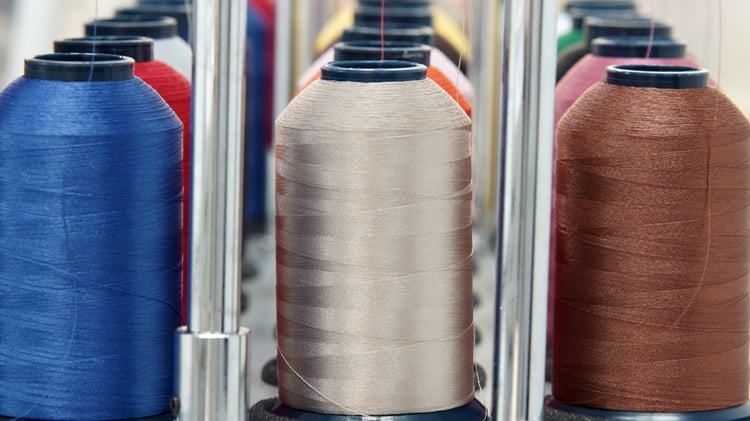
Polyester thread is shiny, durable, and retains its color well, even after bleaching. This is the reason all the embroidery experts use this thread for their high-use projects. It can also be used to sew on thick and heavy weight fabrics without fear of thread breaks.
It comes in a wide range of bright colors and works excellently for embroidery. Another advantage is that it is cheaper than the other threads like rayon, silks and metallics.
Usually it is shiny, sometimes even the shiniest of them all but I have heard that certain brands provide both glossy and matte options.
Rayon
The most shiny thread of all- and cheap to boot; But it has the disadvantage of being too delicate. When I first started machine embroidery I used rayon thread- they called it silk thread and it shined like anything. I thought my embroidery journey was set . But, no! The thread started to break and I was frustrated.
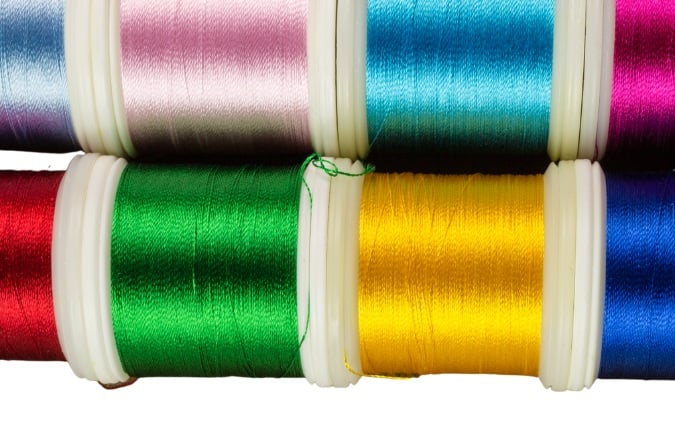
Rayon thread, is made from organic cellulose fibers. It is smooth, shiny, and comes in all the colors you want. Similar to polyester, rayon produces real good work, with some caveats
You should use it on delicate fabrics . And also on fabrics that wouldnot be washed often. Use a 11 number needle.
And be patient. The shine is unworldly but the struggle is real.
Cotton Thread
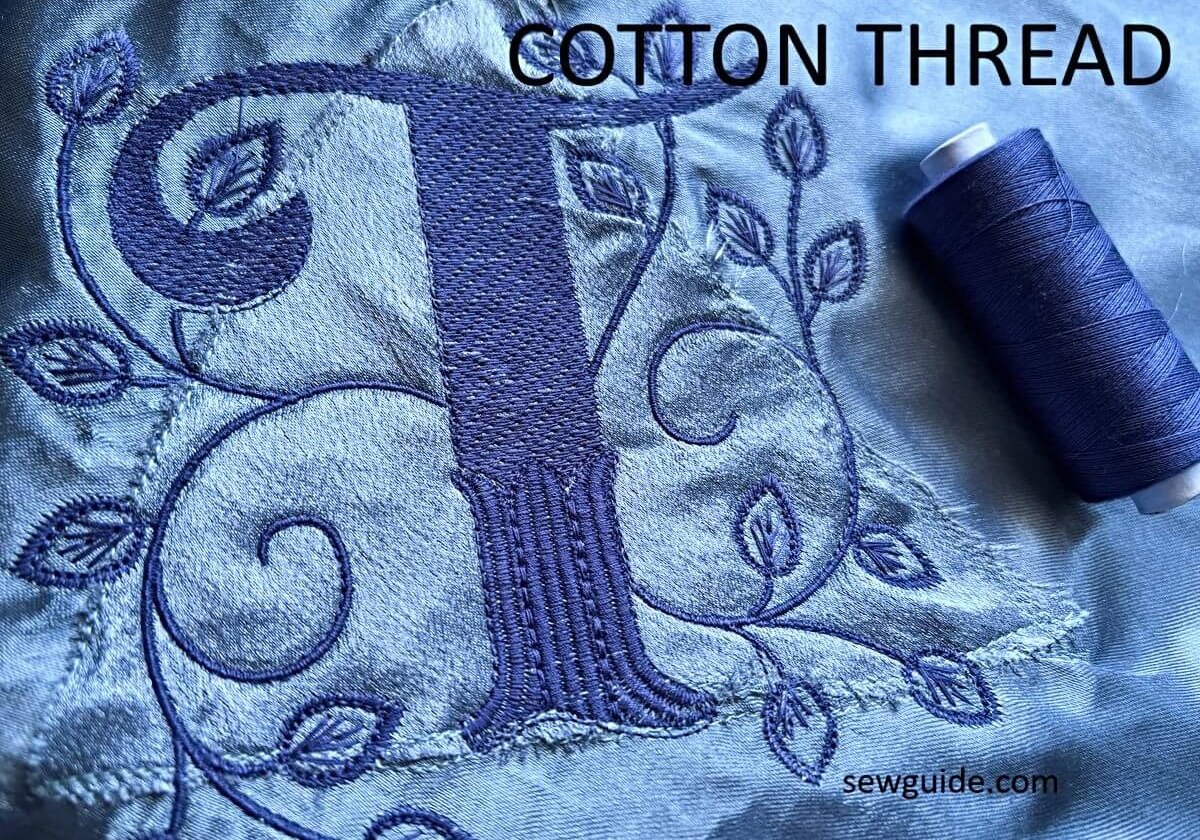
The thread I told you about earlier is the sewing machine thread – other than that you get cotton embroidery thread. It doesnt have the shiny appearance of rayon and polyester. Cotton thread has a natural, matte look.
When you want a natural look you can use cotton thread. It can look like hand embroidery if a thicker thread is used. It is a popular choice for quilting, redwork, and cross-stitch patterns.
Another option is to use a silk finished cotton thread which is finished to have silk like look and feel. In technical terms it is called 100% mercerised cotton thread for embroidery. It will be shinier than regular cotton thread and will be able to handle the speed and tension of the embroidery machine.
Cotton thread sheds a lot of lint. You will need to clean up your machine more often (and the lint may even lead to more wear and tear). And cotton thread may not the best for high density designs.
Metallic Thread
Metallic threads are used to give that metallic shine to embroidery designs. It can look beautiful, but in my experience (limited and not an expert in embroidery) it is quite challenging to stitch with. But decorative stitching done with these threads are something else.
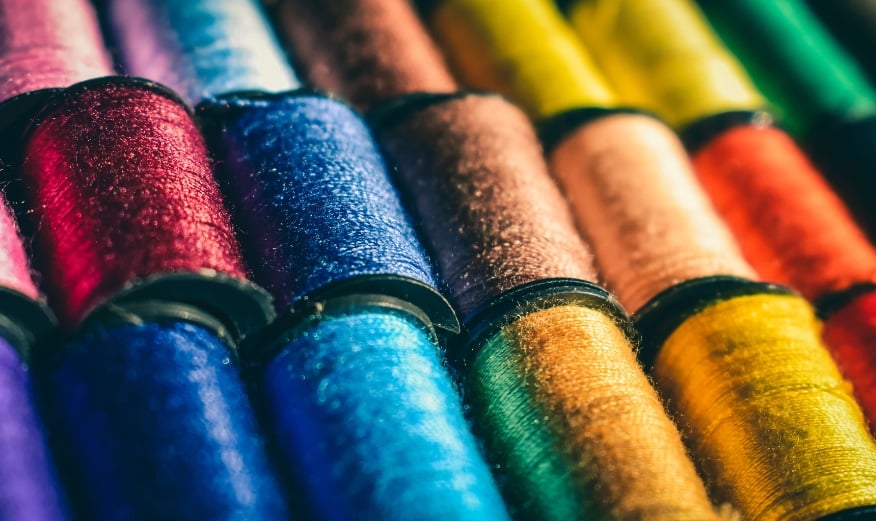
Since the core is made of rayon (or polyester) and is wrapped in real metal foil, these threads tend to twist or kink as they come off the spool. I have read that if you reduce your machine’s speed and make any necessary tension adjustments you can stitch neatly with it. But the times I have used these, not quite smooth sailing ; more thread breaks than with other threads.
SILK Thread
Silk thread is not very commonly used, because it is expensive and not so easily available. But the result of the embroidery design done with this thread is unbelievable. This thread is best used with silk fabrics and other thin fabrics.
One disadvantage of this thread is that it can fray quite easily (silk is natural and delicate) – so lower the speed to avoid frequent thread snapping.
Specialty Thread
When you have sewn enough embroidery designs, you would want to experiment a little bit more with other speciality threads for that extra bit of texture, look etc. Specialty threads, such as water-soluble, glow-in-the-dark, solar active, mylar, wool are all beautiful and bring that extra zing to your designs.
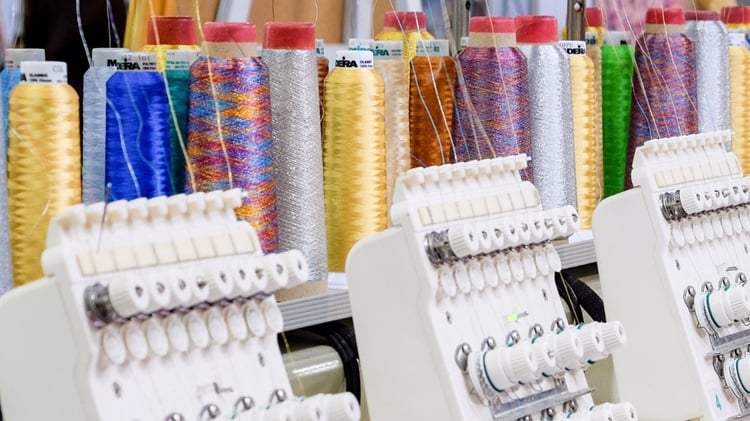
We all designs embroidered with variegated thread – but this thread is more prone to breakage because of the dyeing process or slightly uneven thickness. It’s common for machines to struggle with it.
When working with a specialty thread, it’s important to gather information, and tips about using the suitable needles, fabrics, and designs for that particular thread. For instance, wool thread, which is quite thick, performs best with low-density designs. Same with thick cotton threads.
Tip: Be sure to confirm that a specialty thread is compatible with your particular machine!
Brands
There is a universal truth in embroidery – Different machines perform better with different brands. The best international thread brands are Madeira, Isacord, Dime, Brothread, Coats & Clark, Robison-Anton, Superior Magnifico, Sulky, Floriani, King star Embroidery Thread, Marathon, MetroPro, Simthread, Gutterman and Hemingworth.
You can get color charts with actual thread samples of many of these brands so that you can match colors accurately for your embroidery designs
Other than the number of shades they have, the things to check in your thread are: how well it provides soft coverage inside your design, its ability to maintain the shine and color even after frequent washing, ability to withstand speed of stitching.
You will have to experiment and find the brand that works for you. But…. Do not experiment with these when you have critical design work to do!
Choosing thread according to the Thread Weight
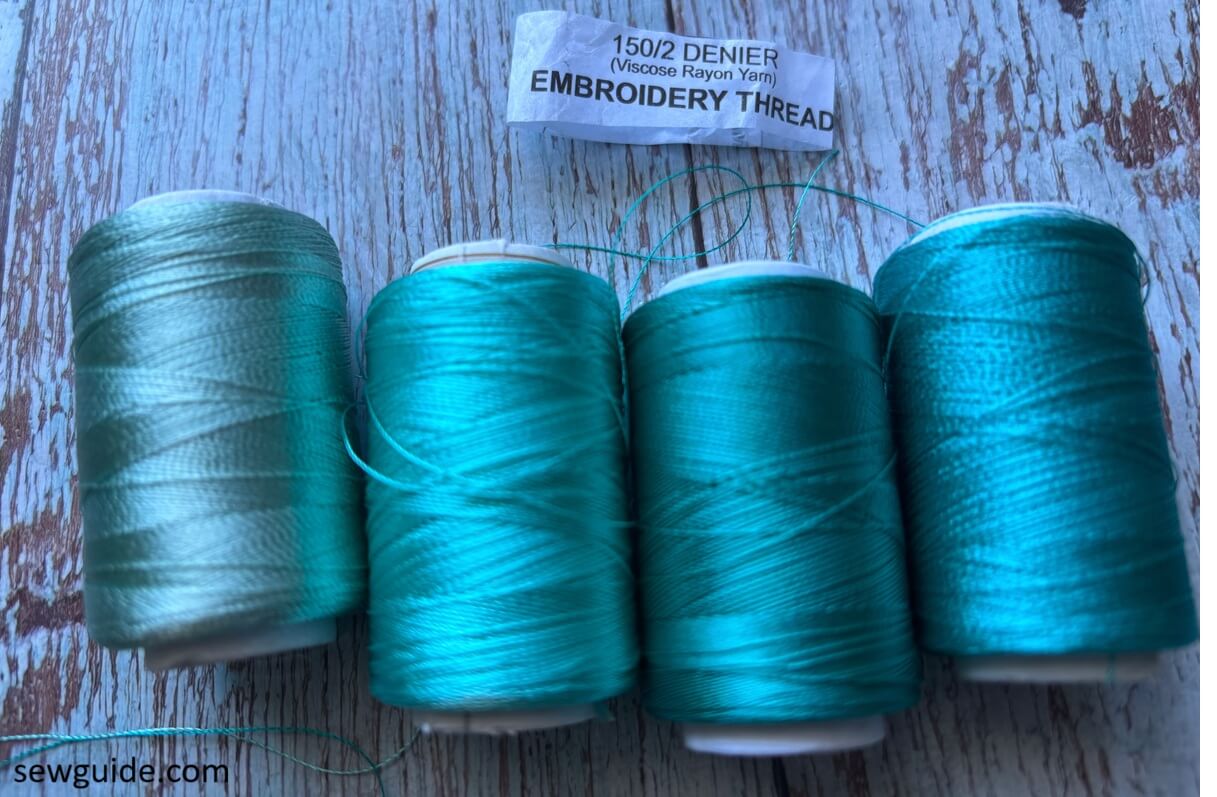
When examining your thread spool, you will notice various numbers displayed on the label. While some of these may be insignificant to you, others hold importance. Be sure to focus on the weight, length, and the color identification number.
In the case of above picture, it says 150/2 denier thread – this means it is a thread with 2 ply and 150 denier – fine but strong enough for embroidery. The number 2 means it is made by twisting two filaments together.
Weight: This is another most commonly used indicator of embroidery thread thickness. Thread weight which will be marked as 30, 40, 50, 60 etc.
Bobbin thread will be thin and have a higher thread weight than top thread. Thinner bobbin thread reduces tension issues and prevents puckering, while thicker top thread ensures a visible, strong stitch.
The principle for selecting the best thread weight is simple: a higher weight means the thread is thinner, while a lower weight indicates a thicker thread.
In machine embroidery, the thread sizes are intentionally mismatched for top thread and bobbin thread. The bobbin thread is thinner (60 wt), while the top (needle) thread is thicker (40 wt). This setup allows the needle thread to be pulled slightly below the fabric surface, rather than meeting the bobbin thread in the middle as it does in regular sewing. The thicker needle thread is pulled slightly below the fabric surface, so the design appears smooth and vibrant on top.
You can use a 40 wt thread for the top and either a 60 or 90 wt thread for the bobbin, for most of your projects.
Another number that will be there in the spool may be the length of the thread – this is not very important, unless you are comparing price of the thread. Length indicates the amount of thread present on the spool- no connection to stitch quality.
Color ID Number: Another number that will be on your thread is an ID number – you can note it down and buy the same to get the exact color for any of your future reordering.
Bobbin Thread
You can buy cotton, spun polyester, and filament polyester threads for loading your bobbin for stitching embroidery. Bobbin thread is typically thinner than the top thread. A thread weight of 60 to 90 is prefered for this.
While it is perfectly ok to use cotton as bobbin thread for your embroidery stitching, it creates more lint than the other thread. And, when you stitch a lot it can be bothersome.
On the other hand, polyester bobbin thread does not generate lint, and filament polyester is particularly preferred due to its strength and thinness.
You can either wind bobbin thread from spools into the bobbin case using your machine or purchase prewound bobbins.
Keep threads covered in a sunlight-free place and separate to prevent unraveling and tangling and also keep it dust free. It is not the quality of the thread alone that influences the way your thread behaves. The needle you use is also important – for eg. the stabilizer you use and the spray adhesive you spray all can clog the needle and cause the thread to fray before its time – remember to clean it with alcohol swabs. And replace needles every 1,00,000 stitches to keep it from breaking your precious thread.
Related posts: Machine embroidery supplies you need to get started ; The best stabilizers for embroidery

